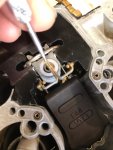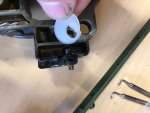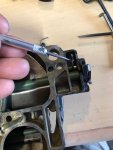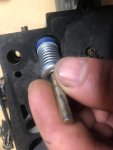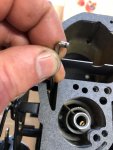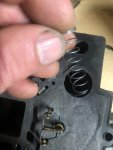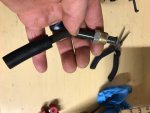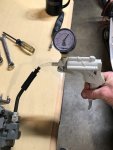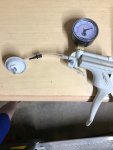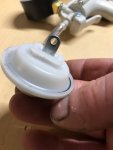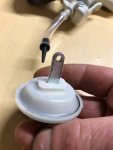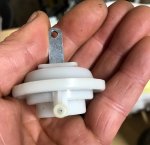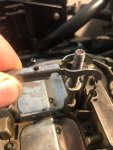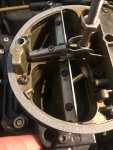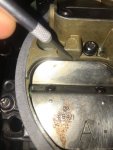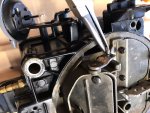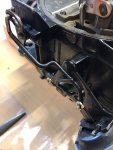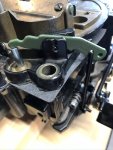Baylinerchuck
Commander
- Joined
- Jul 29, 2016
- Messages
- 2,740
Install the float valve, (fuel inlet valve) seat next. Make sure the old seat gasket was removed during the tear down. Install the new seat gasket, then install the seat. Tighten firmly with a screw driver that will not damage the brass.
As a note, the rebuild kit from Cliff’s Performance contains the proper high flow seat and valve. The more generic kits have a seat that is slotted near the threads which can allow the fuel to drain completely out of the bowl if the check valve in the fuel pump or anti siphon valve get weak. This would certainly make for extra cranking to fill the bowl after the engine has been stopped.
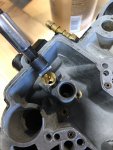
Install the valve and the float. Be sure that the clip which is the floats fulcrum is properly seated. Do not use the wire clip that attaches the needle to the float. It can be discarded. Most kits will come with a chart that specs the proper float height. This adjustment is extremely critical as fuel level affects all circuits of the carburetor.
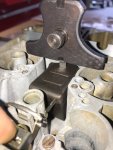
Press lightly on the back of float until the valve seats, and measure as shown. This little square make a perfect float height gauge as the measurement can be locked down. The float height for this carburetor is set at 9/32”.

As a note, the rebuild kit from Cliff’s Performance contains the proper high flow seat and valve. The more generic kits have a seat that is slotted near the threads which can allow the fuel to drain completely out of the bowl if the check valve in the fuel pump or anti siphon valve get weak. This would certainly make for extra cranking to fill the bowl after the engine has been stopped.

Install the valve and the float. Be sure that the clip which is the floats fulcrum is properly seated. Do not use the wire clip that attaches the needle to the float. It can be discarded. Most kits will come with a chart that specs the proper float height. This adjustment is extremely critical as fuel level affects all circuits of the carburetor.

Press lightly on the back of float until the valve seats, and measure as shown. This little square make a perfect float height gauge as the measurement can be locked down. The float height for this carburetor is set at 9/32”.





















